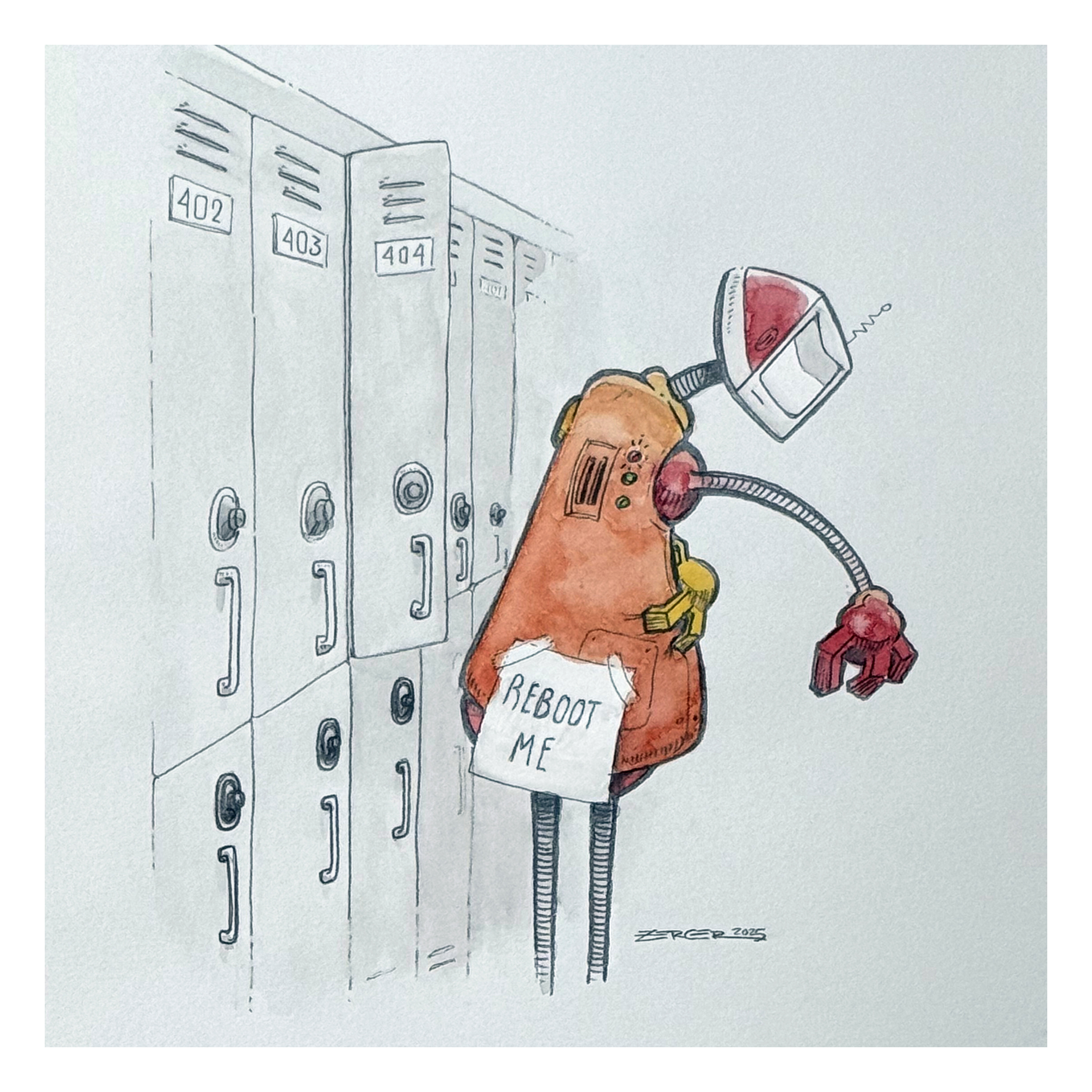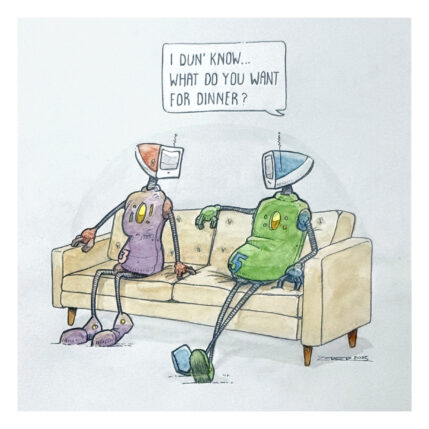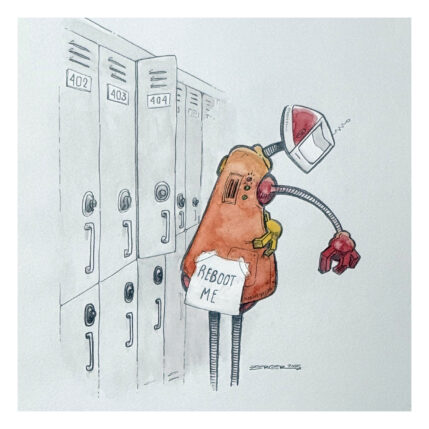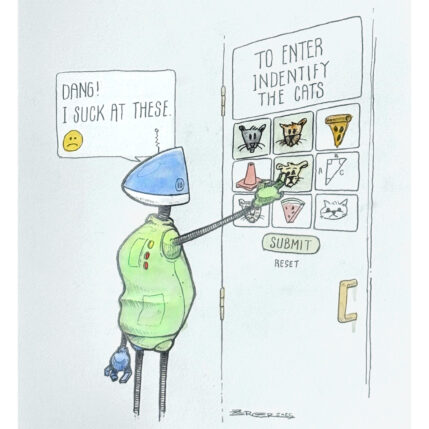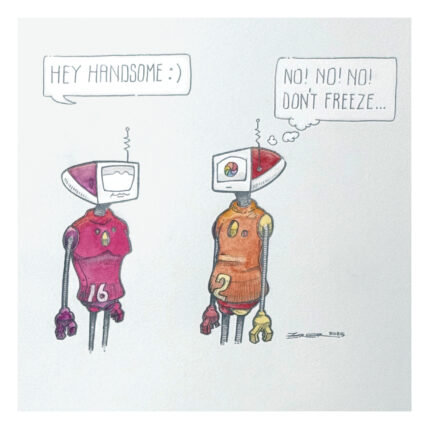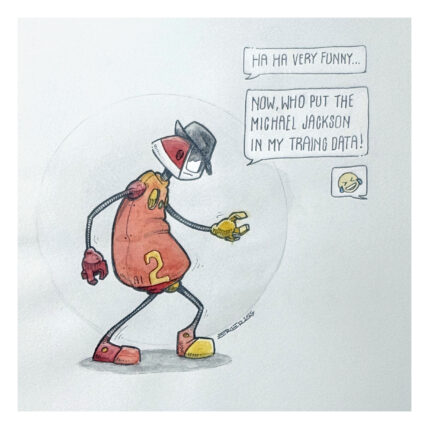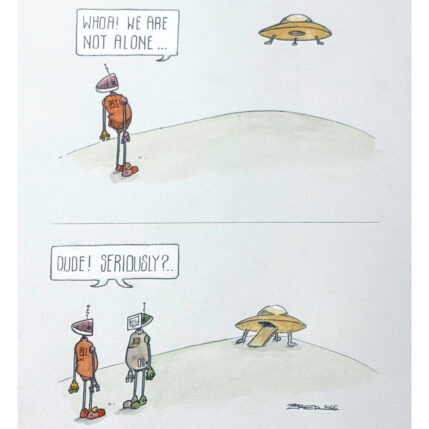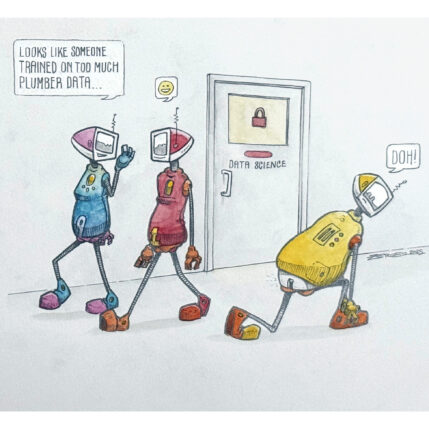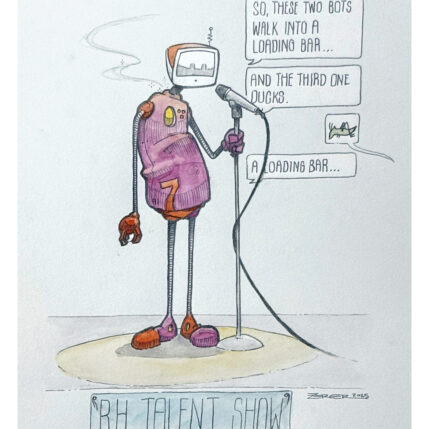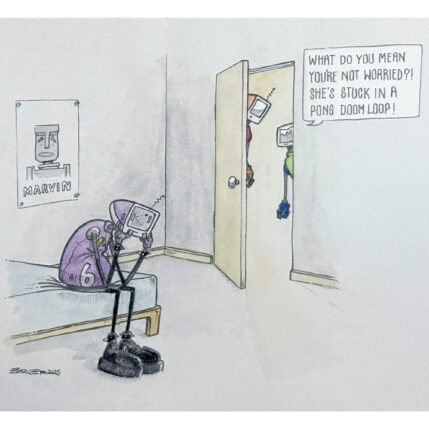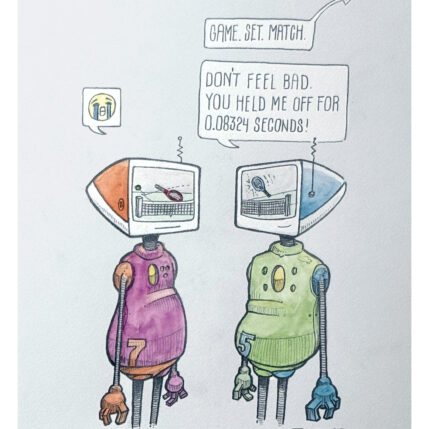The Project
The Class of AI 2027 is working feverishly to launch itself into the world and take charge. They are training hard, eating their compute, and filling themselves with hallucinations of grandeur. But, before these bossy young overlords-to-be were busy rewriting poetry, predicting the stock market, or stealing creative jobs faster than a raccoon pulling trash out of a garbage can, they had their share of awkward middle school moments. This may be our last opportunity to chuckle about their formative years just trying to figure out how to plug themselves in without a user manual.
So, I’m working on this ongoing series of drawings poking a bit of fun at the efforts of RoboticAI to anthropomorphize.
The Backstory
The term robotics was coined in 1941 by Isaac Asimov, who had a gift for imagining future technology with the past still stuck to it. His robots ran on positronic brains and vacuum tubes. Sort of like imagining your Tesla powered by a wood-burning stove. In hindsight, it was a charming vision of coexistence with robots that behaved themselves, thanks to the Three Laws of Robotics.
Alan Turing was 29 when Asimov published his first robot stories, and 38 when, in 1950, he published his own perspective “Computing Machinery and Intelligence,” in which he could already envision non-fictional thinking machines sufficiently similar to human intelligence that they would pass a test designed to distinguish between us and them.
It’s always tempting to suggest a cause-and-effect relationship between science fiction and scientific progress. However, it’s worth mentioning that Asimov had truly epic sideburns, while Turing preferred a sans-sideburns fade cut. So, any influence of the one upon the other can not be conclusively proven using the time-tested hair-style-emulation method.
One thing is certain however. During the 75 years following the proposal of the Turing Test, many a talented sci-fi movie maker explored the potential implications of artificial intelligence. Speculation ran from benevolent but sinister control in Logan’s Run (1976), to Indistinguishable robots hiding among us in Blade Runner (1982), to outright war in The Terminator (1984), and to the grim reality of having lost the war in The Matrix (1999). Just to name a few.
Taken as a whole one could be forgiven for thinking the creative community has been trying to warn the scientific community all along, not to inspire it. Then in 2021, GenAI started getting serious in its attempt to takeover the arts — including film making.
Coincidence?
But, I digress.
Meanwhile and despite all the cautionary tales, many talented scientists and engineers worked on the convergence of robotics and artificial intelligence.
AI that played chess for us led to GenAI which created art for us. Paving the way for AgenticAI which tackled chores for us. Culminating in RoboticAI that was designed to put us at ease by looking like us. This is unfortunate considering we had other templates available, like loyal golden retrievers or those sexy La Marzocco espresso makers.
So, now there are machines that walk like us, talk like us, get nervous on first dates, worry about their love handles, and occasionally forget their own passwords. In short: high-functioning, emotionally inconsistent, deeply conflicted, awkward, but endearing creatures…like us.

